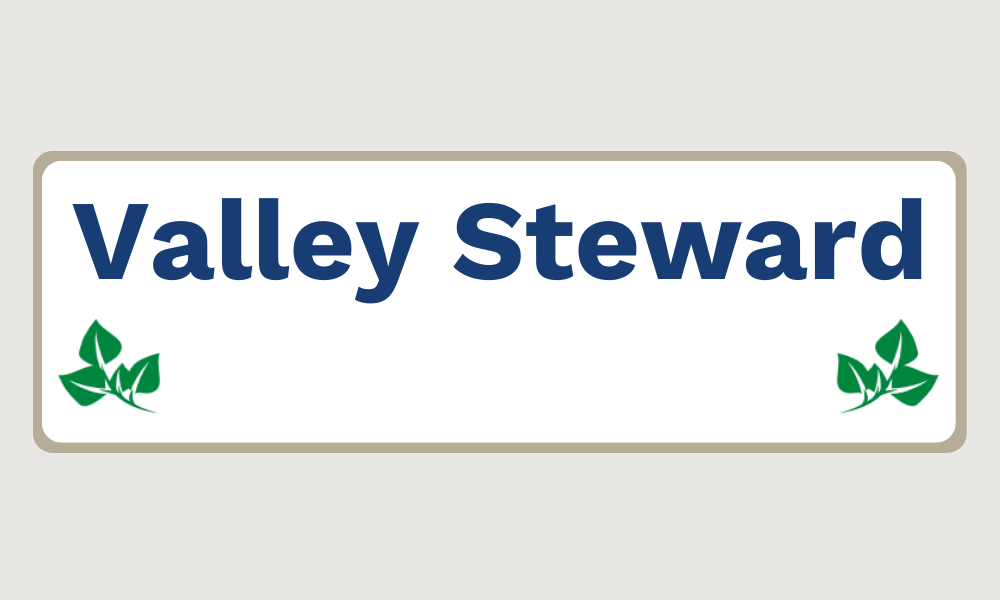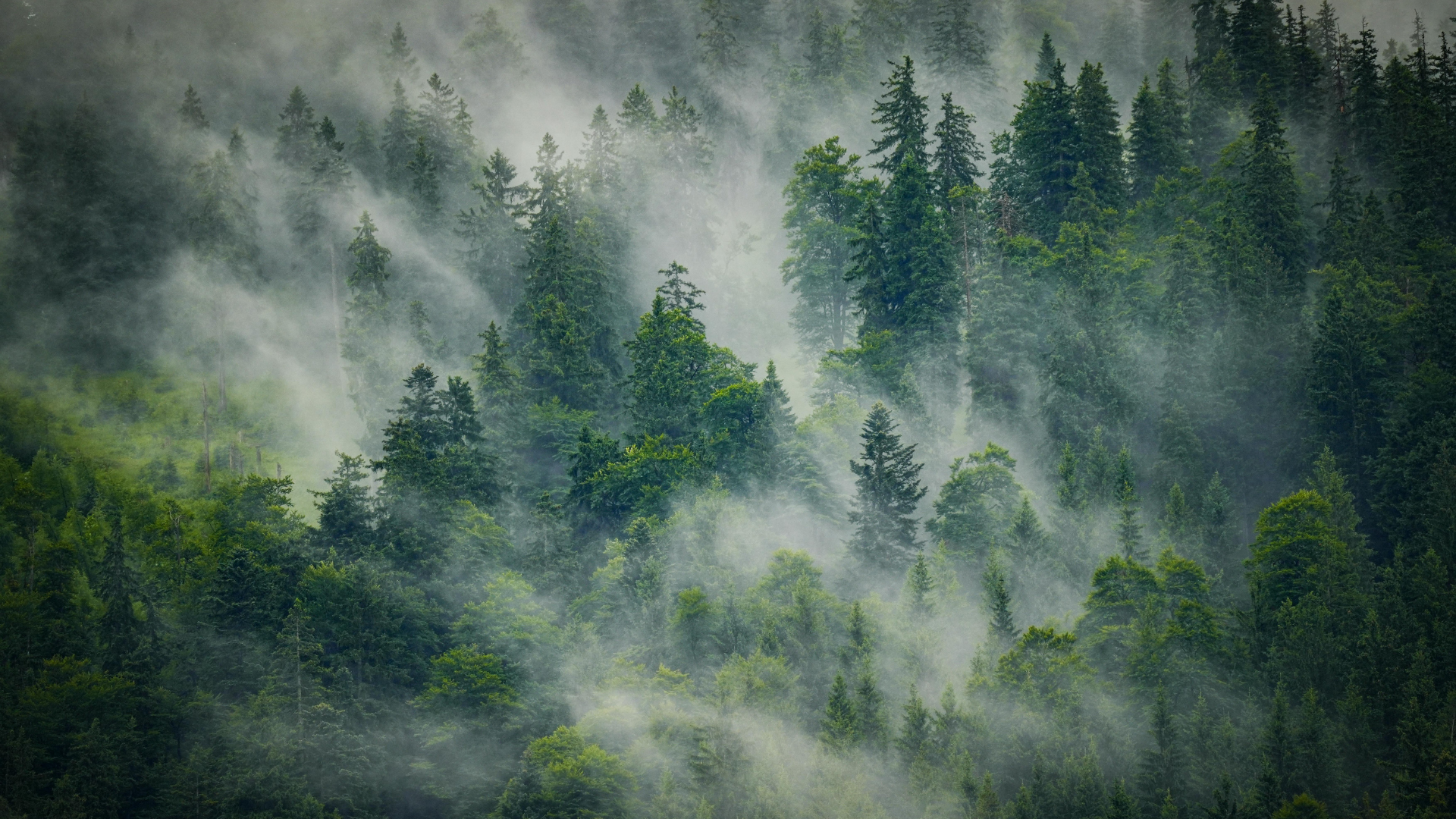Picture yourself on a hot summer day, sweating as you push around a lawn mower that took far too long to start. You finish the weekly chore and want nothing more than to go to a beach, with its sandy shore, cool water and scenic mountain view. This fantasy quickly diminishes as you trip over a hose that you now have to spend time untangling. Your lawn needs water after all to keep it green this time of year which can be a struggle, because it naturally wants to turn light brown and go dormant until the heat lets off. Speaking of green, you notice that your neighbour’s grass is a darker, more vibrant shade than yours. This reminds you that it’s just about time to add another round of chemical fertilizer. You forgot to pick some up on your last visit to the hardware store, when you bought that pesticide to battle the beetles wreaking havoc, and herbicide to keep the weeds from disrupting the well manicured lawn.
Growing a lawn, purely for aesthetics, sure is a lot of hassle for something that can have such a negative impact on the environment. Some sources have estimated that somewhere in the neighborhood of 54-million kilograms of pesticides are used each year in Canada. According to the US Fish and Wildlife Service, “homeowners use up to 10 times more chemical pesticides on their lawns than farmers use on their crops.” All these chemicals can do considerable damage to wildlife including contributing to the death of millions of birds, as well as amphibians, who are especially vulnerable. Not only that, but an average garden hose can deliver, and waste, up to 600 liters of water per hour.
After thinking about all this you’re probably wondering if there’s another way. This can’t be worth it. Should you paint your lawn green during the hot summer months, or just install artificial turf? Should you plant invasive periwinkle to aggressively take over the space? Please don’t, despite these being suggested by others as lawn alternatives.
Well, have hope. There are alternatives out there that will be better for both you and the environment. Here are just a few of the most common:
Clover (micro or white dutch)
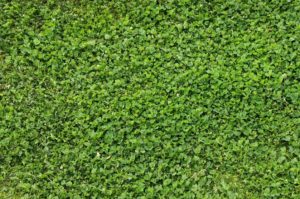
Photo by Marina Shemesh
A good low water lawn alternative is clover. Clover adds nitrogen to the soil and rarely, if ever, requires additional fertilizer. It can be mowed short but doesn’t require it. In fact, not mowing will help it reseed itself for the following year. Clover is pest resistant, while also attracting pollinators and other beneficial insects. And it grows aggressively enough to compete with those weeds you are constantly battling with in a turf grass lawn.
When the rest of the neighbourhood goes brown during the height of summer, a clover lawn will stay green. It’s relatively durable to walk on and there is no worry about “dog spots.” It may require reseeding every few years, but is relatively inexpensive when you consider the amount a clover lawn would save on environmentally harmful chemicals, fertilizers and water.
Moss
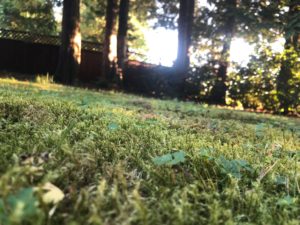
Photo by Aleesha Switzer
Moss is a nice lawn alternative for a shady area with acidic soil. It doesn’t take foot traffic as well as grass and does require added water, but it doesn’t require mowing and can be the solution for an area that was struggling to grow grass anyway. A moss lawn can add a wonderful aesthetic to an outdoor space.
Sedum beds
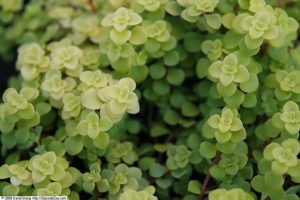
Photo by David J. Stang
Another low traffic aesthetic lawn alternative are sedum beds. “Sedum” is a large genus of plants, but within it contains many creeping species that are a low growing, spreading succulents that require almost no water or fertilizer. They will grow in some of the poorest soils, where grass had trouble but weeds flourished. You can also add pest and disease resistance to the list of advantages to planting sedum. Another major draw to installing sedum beds is that they flower, which your local pollinators will appreciate. Many of the ideal varieties are evergreen, so you can enjoy having some green all year long.
Rock gardens
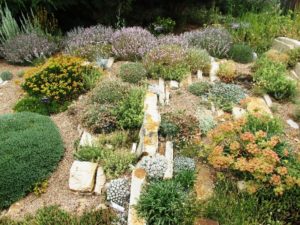
Photo by Flickr user brewbooks
Rock gardens are a classic choice for people who are sick of dealing with their grass lawn. Planting a garden of drought resistant, low maintenance plants will save you a lot of time in the summer as well as help you conserve water. Rock gardens often use a lot of decorative stone, and can be quite showy and artistic!
Yarrow
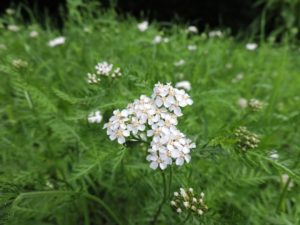
Photo by Pixabay user romanhoertner
Another low water, low maintenance choice for a lawn alternative is yarrow. Yarrow will reliably fill a space with time and provides flowers for you and your pollinator friends to enjoy. Compared to other flowering plants, it is fairly resistant to foot traffic and only needs to be mowed twice a year, once in the spring and once in the late summer after it has bloomed. Most varieties are quite a bit taller than a manicured lawn, but there are some dwarf varieties out there.
Creeping thyme
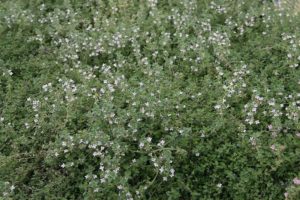
Photo by David Stang
Creeping thyme makes for an excellent drought tolerant alternative to turf grass once it gets established. It smells great, flowers and can be walked on to some degree.
Chamomile (English variety)
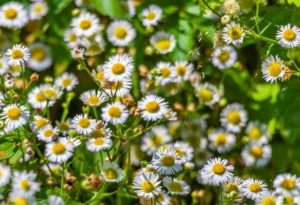
Photo by Michel Rathwell
Chamomile not only makes a relaxing tea but can also be used as a replacement for a turf grass lawn. It requires little to no mowing or fertilizing and also smells great. Just keep in mind that it doesn’t take to foot traffic too well, especially when it’s establishing. What it lacks in durability though, it makes up for in visual appeal with white flowers that are much nicer to look at than a grassy lawn that wants to turn brown all summer.
Flower mixes such as “bee turf” (West Coast Seeds)

Photo by West Coast Seeds
There are flower mixes offered by some companies that are meant to replace turf grass with low growing perennial flowers, often mixed with clover. They usually aren’t great for foot traffic and in my experience they grow taller than most of the other lawn alternatives listed. Even so, they are quite beautiful, and a great choice for those who want to help out their local pollinators.
Grow vegetables!
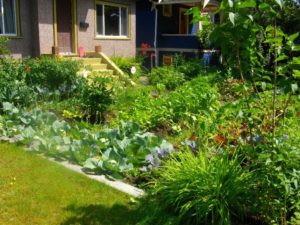
Photo by Al Pasternak
Instead of wasting resources on grass, many people are choosing to transform parts of their lawn into productive vegetable gardens. Of course this is equally, if not more labour intensive as grass and will also require added water, but at least you will get something back in the form of a harvest. It doesn’t get any fresher than from the garden, right to the table. Be sure to check the bylaws in your area though, unfortunately some areas would rather you keep that grass.
–
The days when having that perfectly manicured lawn are ending. Lawns are detrimental to the environment by using an excess of our precious water resources, and the pesticides applied to them are harmful to wildlife. They are needlessly labour intensive and take more work than it’s worth to maintain. By replacing these outdated symbols of status with one of the alternatives listed above, you can save water, wildlife, and protect the environment in your own small way. In the process you’ll also free up time that you can use to enjoy those short summer months. Let your neighbour waste their time chasing that dream lawn. Or better yet, show them there is another way, that’s better for the people, wildlife, and the environment alike.
For more information and growing tips check out Metro Vancouver’s Grow Green Guide
Sources
https://www.worldatlas.com/articles/top-pesticide-consuming-countries-of-the-world.html
https://dwr.virginia.gov/wp-content/uploads/homeowners-guide-frogs.pdf
https://www.fs.fed.us/psw/publications/documents/psw_gtr191/psw_gtr191_1029-1042_erickson.pdf
